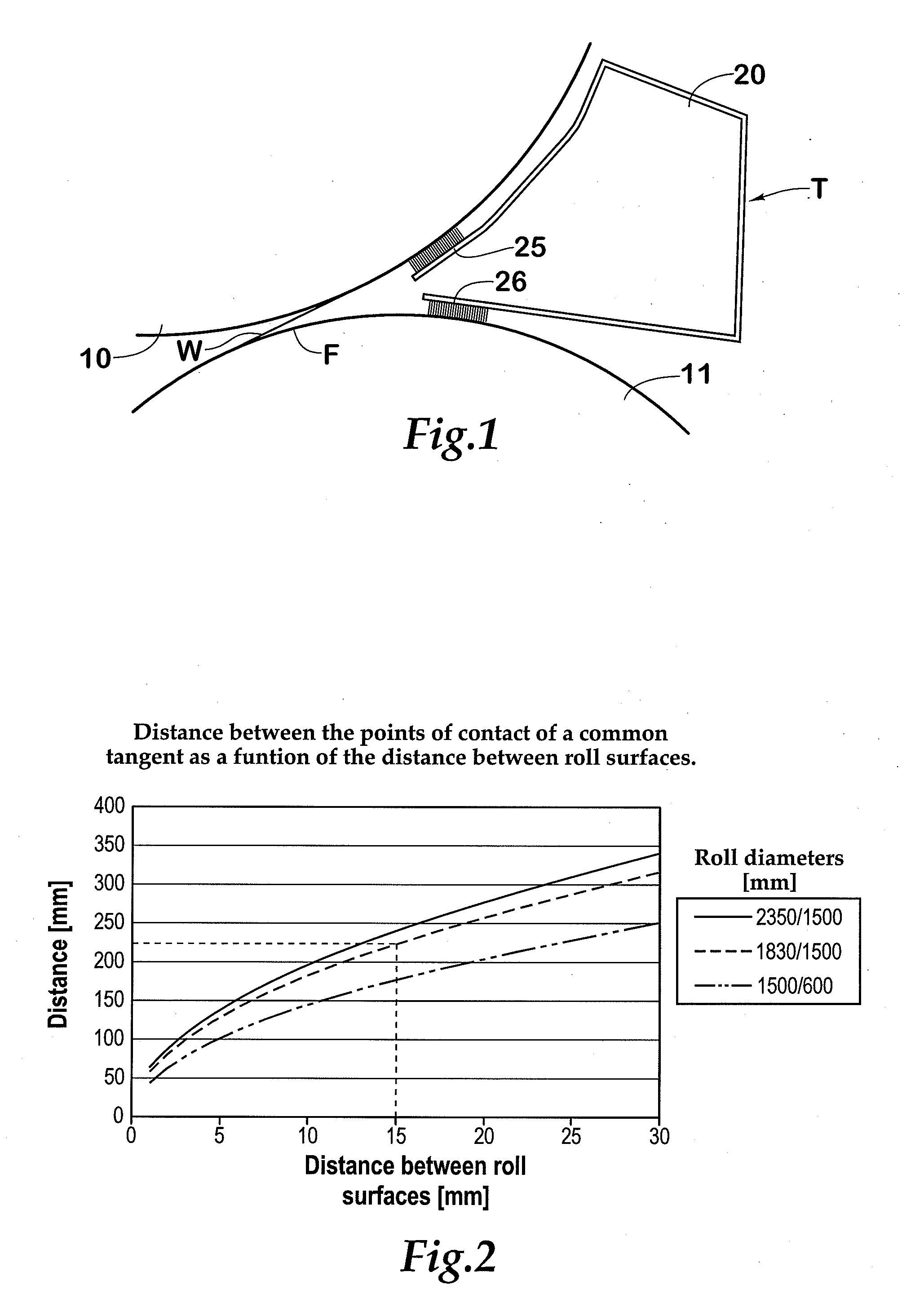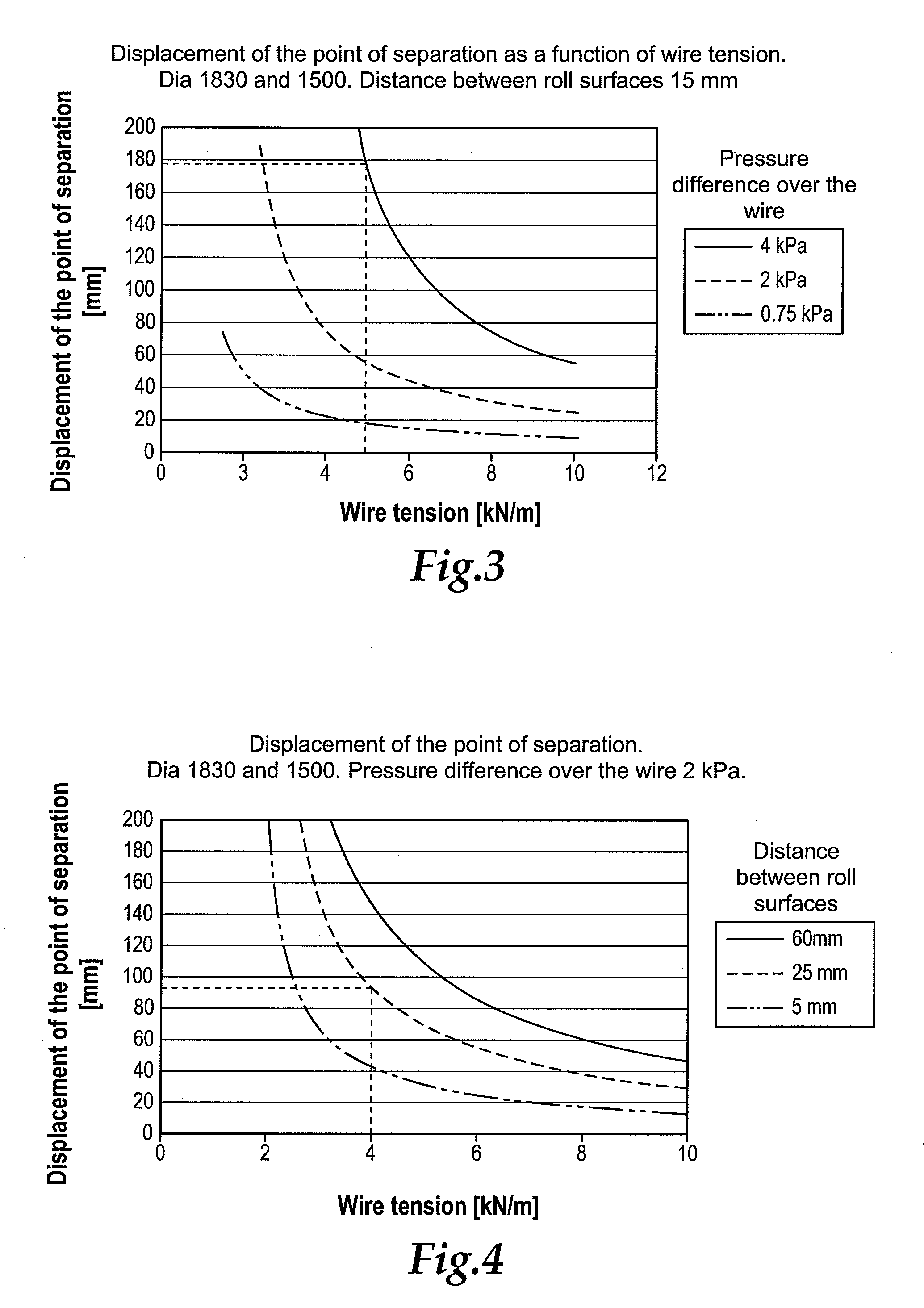Paper or Board Machine Employing a Single-Wire Draw Dryer Section
a dryer section and paper or board technology, applied in drying machines with progressive movements, lighting and heating apparatus, furnaces, etc., can solve the problems of loss of runnability, no longer operating the runnability component in the desired manner, and inability to achieve the desired effect of runnability, and achieve the effect of reducing, minimizing, and reducing the number of problems
- Summary
- Abstract
- Description
- Claims
- Application Information
AI Technical Summary
Benefits of technology
Problems solved by technology
Method used
Image
Examples
Embodiment Construction
[0025]FIG. 1 shows one embodiment of the arrangement in accordance with the invention, placed in a group of drying cylinders applying single-wire draw in a dryer section of a fiber-web machine, such as a paper or board machine, which figure shows, of the drying group, a drying cylinder 10 and a reversing cylinder 11 placed below it. A paper web W that is being dried runs on support of a drying wire F from the drying cylinder 10 to the reversing cylinder 11 and further in a similar manner of normal single-wire draw. A runnability component 20 in accordance with the invention is placed in a pocket space T remaining between the drying cylinder 10, o the reversing cylinder 11 and the next drying cylinder (not shown) and the drying wire F, which runnability component produces a negative pressure that is used for enhancing the runnability of the paper web W in cylinder drying, in particular in an area of a gap opening from the drying cylinder 10. The runnability component 20 produces a ne...
PUM
 Login to View More
Login to View More Abstract
Description
Claims
Application Information
 Login to View More
Login to View More - R&D
- Intellectual Property
- Life Sciences
- Materials
- Tech Scout
- Unparalleled Data Quality
- Higher Quality Content
- 60% Fewer Hallucinations
Browse by: Latest US Patents, China's latest patents, Technical Efficacy Thesaurus, Application Domain, Technology Topic, Popular Technical Reports.
© 2025 PatSnap. All rights reserved.Legal|Privacy policy|Modern Slavery Act Transparency Statement|Sitemap|About US| Contact US: help@patsnap.com



